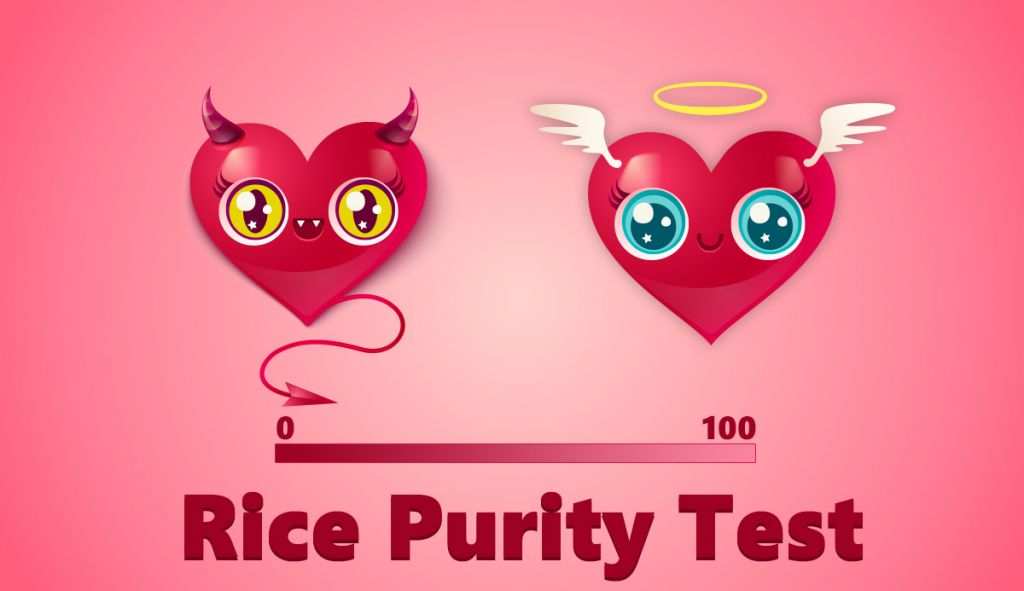The Rice Purity Test: An Unconventional Measure of Innocence and Experience
Societies evolve over time, and the behaviors considered ‘innocent’ or ‘experienced’ change as well. The Rice Purity Test is a unique snapshot of the societal norms of a particular time and place – in this case, the American college culture. It provides insight into the behaviors considered ‘typical’ or ‘deviant’ for college-aged individuals, revealing societal attitudes towards sexuality, substance use, and law-abiding behavior.
The test’s evolution over the years mirrors societal changes. For example, as societal attitudes towards premarital sex and recreational drug use have become more liberal, the test’s newer versions have reflected this shift. Similarly, as discussions about consent and safe sex have become more prominent, the test has incorporated these concepts.

Use of the Test in Transitioning to College Life
The transition to college often involves a significant shift in personal autonomy and exposure to new experiences. For many, this is both exciting and daunting. The Rice Purity Test, often introduced during college orientation, provides a unique platform for students to reflect on their experiences and prepare for potential new ones.
The test helps highlight that everyone arrives at college with a different range of experiences, challenging the assumption that there’s a ‘normal’ level of experience for entering college students. By sparking conversations about these experiences, the test can help incoming students feel less alone in their anxieties or uncertainties about college life.
How the Test Facilitates Personal Growth and Reflection
Beyond its role as a conversation starter, the Rice Purity Test can serve as a tool for personal reflection. It prompts individuals to consider their comfort zones, personal boundaries, and decisions. While the test isn’t designed to prompt change. The reflection it encourages can lead individuals to reconsider their attitudes and behaviors.
For example, someone who scores very high on the test may reflect on whether they are satisfied with their level of experience or if they feel they are missing out. Conversely, a person with a very low score may consider whether they are engaging in risky behaviors or pushing their comfort zones too far. In both cases, the test can serve as a catalyst for personal growth and self-awareness.
Future Directions for the Rice Purity Test
Looking ahead, the Rice Purity Test could continue to evolve to better reflect changing societal norms and experiences. This might involve adding new questions, revising existing ones, or even creating different versions of the test for different cultural contexts.
While the test’s future will depend on those who administer and adapt it, its continued popularity suggests that it will continue to serve as a unique tool for self-reflection and discussion among young adults. As we continue to grapple with concepts of innocence, experience, and societal norms, tools like the Rice Purity Test will remain relevant for sparking dialogue and fostering self-awareness.

Significance of the Test in Modern Digital Culture
In the era of digital communication, the Rice Purity Test has found a new lease of life. Its transition from a paper-and-pencil checklist to an online test has amplified its reach and impact. Making it accessible to a global audience. It has become a popular topic on social media platforms, online forums, and even YouTube, where influencers share their scores with their audience. Often sparking wider discussions about societal norms and expectations.
Interestingly, the test’s digitalization has also allowed it to serve as an anonymized data collection tool. Providing insights into the experiences and behaviors of different demographic groups. While such data should be interpreted cautiously due to potential selection bias. It offers a fascinating glimpse into the range of experiences among young adults in different parts of the world.
Moreover, the online version of the test allows for instant score calculation and comparison. Adding a gamification element that has likely contributed to its popularity. Users can instantly see where they stand compared to others and engage in discussions about their scores.
The Rice Purity Test as a Cultural Phenomenon
The enduring popularity of the Rice Purity Test reveals much about our collective fascination with self-discovery and peer comparison. The test taps into the universal human desire to understand ourselves better and see how we measure up against others.
Its role as a cultural phenomenon is cemented by its ability to spark conversations about often unspoken topics. It challenges societal taboos and encourages open discussions about experiences that are often kept private. In doing so. It not only serves as a tool for individual self-reflection but also helps to challenge and shape societal norms.
The Limitations of the Test
While the Rice Purity Test is a fascinating tool, it’s important to keep its limitations in mind. Firstly, the test’s binary nature (i.e., whether an experience has occurred or not) fails to capture the complexity of human experiences. It does not consider the context, frequency, or impact of these experiences. Which are crucial for understanding an individual’s personal journey.
Secondly, the test’s focus on ‘purity’ as a measure of innocence can perpetuate harmful stereotypes and moral judgments. The idea that certain experiences ‘taint’ an individual’s purity reinforces outdated notions of morality and can lead to shame and stigma.
Finally, the test’s origins in a specific cultural and temporal context limit its applicability to diverse populations. It may not accurately reflect the experiences and norms of individuals from different cultural backgrounds or generations.
The Future of the Rice Purity Test
Despite these limitations, the Rice Purity Test remains a popular and influential tool. Its future lies in its ability to adapt and evolve in response to societal changes. This could involve revising the test to remove harmful stereotypes, including more diverse experiences, and creating culturally specific versions.
As our world continues to change. The Rice Purity Test provides a unique opportunity to reflect on our individual and collective journeys. By sparking conversations about experiences and norms. It helps us navigate the complexities of growing up, challenging societal expectations, and understanding ourselves. Regardless of its future form or content. The test’s enduring popularity suggests that it will continue to play a role in fostering self-reflection and open dialogue for years to come.
Author Bio
My name is Emma Perez, and I have a keen interest in the field of writing. I have written a couple of articles on various gemstones, fashion and would love to express my opinion on more such stones. Hope it has maximized your knowledge of gemstone jewelry and satisfied your quest to buy moldavite jewelry from an authentic place. We believe in quality and offer the same in our information and products.





